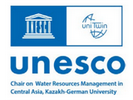



Year: 2024
Collections: Scientific Publications
Topics: Climate, Energy
Authors: Sergey Vassilyev, Galym Iskakov
Countries: Kazakhstan
Source: Central Asian Journal of Sustainability and Climate Research
The study aimed to evaluate the economic and financial viability of a coal mine methane (CMM) utilization project in Central Kazakhstan, demonstrating a methodology for similar initiatives. The analysis was based on the 2013 project proposed by the US Environmen-tal Protection Agency (EPA) that intended to capture methane emissions from six coal mines for electricity generation, yet was never implemented. The study’s relevance stems from Kazakhstan's 2030 methane pledge, recent progress in the country's climate change-related policy, mineworker mortality in 2023, and the shift of mines ownership. Building upon the technical specifications of the 2013 US EPA project, this research em-ployed standard financial and economic cost-benefit analysis (CBA). The financial model utilized a traditional discounted free cash flow approach, while the economic model in-corporated additional factors like the value of statistical life (VSL), shadow pricing, as well as benefits associated with mitigating ozone health impacts, crop damage, mine ex-plosion risks, and CO2 emissions. The economic model has indicated a positive net pre-sent value of $243 mln and 42% internal rate of return. The financial analysis also sug-gests potential profitability under fair electricity and carbon pricing market conditions. To assess project robustness under varying economic and financial assumptions, the study included a sensitivity analysis. The research has likewise leveraged prior CMM-related studies in Kazakhstan and provides valuable guidance for analyzing similar projects. In addition, it also highlights the need for certain adjustments in the current legislation to incentivize such projects, as well as to promote environmental sustainability and social development by mitigating methane emissions, which aligns with Kazakhstan's climate goals.
Year: 2024
Collections: Policy Briefs
Topics: Energy
Authors: Кобзев Алексей, Мануэль Андреш, Абылайхан Солтанаев, Нурбек Есетов
Countries: Kazakhstan
Source:
Энергетический переход продолжается с беспрецедентной скоростью и масштабом, требуя новых технологий с низким уровнем выбросов углерода. Зеленый водород рассматривается как часть решения для достижения декарбонизации промышленности, что потребует согласованных действий со стороны промышленности и правительства для того, чтобы Казахстан смог получить выгоды.
Year: 2024
Collections: Policy Briefs
Topics: Energy
Authors: Kobzev A., Manuel Andresh, Abylaikhan Soltanayev, Nurbek Yessetov
Countries: Kazakhstan
Source:
Year: 2024
Collections: Video
Topics: Water, Climate
Authors:
Countries: Kazakhstan, Uzbekistan
Source:
Year: 2024
Collections: Scientific Publications
Topics: Water, Climate
Authors: Aidar Zhumabaev, Hannah Schwedhelm, Beatrice Marti, Silvan Ragettli, Tobias Siegfried
Countries: Kazakhstan
Source: https://water-ca.org
The Badam River, a tributary to the Arys River located in the Syr Darya basin, is a crucial natural resource for ecological, social, and economic activities in the semi-arid region of southern Kazakhstan. The river basin is heavily influenced by manmade water infrastructure and faces water scarcity, particularly during summer, highlighting the importance of understanding its hydrological processes for effective water resource management. In this study, a semi-distributed conceptual hydrological model of the Badam River was implemented using the RS MINERVE hydrological software to evaluate the impacts of climate change on hydrology and to test the resilience of the water system. Connected HBV models were implemented for each of the hydrological response units that were defined as altitudinal zones. The hydrological model was calibrated using daily time steps between 1979 and 2011, and the resulting flow exceedance curves and hydrographs were used to assess the potential impacts of climate change on the basin, using CMIP6 precipitation and temperature scenarios. Future climate scenarios for the 2054 – 2064 period demonstrate that the peak discharge will be shifted to spring/late spring compared to the current early summer with no significant decrease in average discharge per day of the year. The insights gained from this hydrological-hydraulic model can be used to effectively manage the water system and inform future hydropower design decisions and serve as a blueprint for similar studies in the region and elsewhere.
For questions about cooperation, please contact us at: